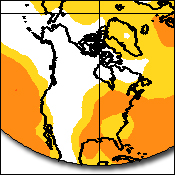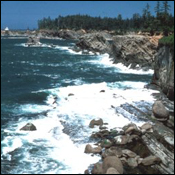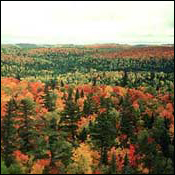Recent Events
Dr. Yang’s CV (short, long), statement of research interests; statement of teaching objectives. |
Welcome to Dr. Zong-Liang Yang’s Land Environment and Atmospheric Dynamics Group at UT-Austin. The LEAD group consists of graduate research assistants, postdoctoral fellows, research scientists and visiting scholars. We view the earth system in a holistic way, linking the atmosphere, ocean, biosphere, cryosphere, and solid earth as an integrated system. We use powerful methodologies such as satellite remote sensing, earth system modeling, and high performance computing which are now profoundly changing research in earth system sciences. We place a strong emphasis on the societal impact of the research in earth system sciences. Specifically, we are working to answer a wide variety of earth science questions below.
-
How does land shape climate, or vice versa, on all time and space scales?
-
What has been the impact of human activity on the Earth?
-
What is the future of our environment in the face of changing climate, land use and human demands?
-
What is our prospect for regional and global river reanalysis? How can we predict river flows at continental and global scales?
-
How accurate are climate models in simulating biosphere-hydrosphere-atmosphere interactions?
-
What are their uncertainties? How can we improve them? How can we make decision under uncertainties?
-
Are current satellite datasets alone sufficient for monitoring our environmental conditions? How can we integrate satellite data in decision making process?
Projects & Grants
 |
 |
 |
| Seasonal Precipitation Prediction Project | Coastal Zone Interdisciplinary Science Project | Climate Change/Air Quality Project |
Principal Research Areas
- Development and Application of Integrated Multi-scale and Multi-disciplinary Environmental Modeling and Observational Systems
- Parameterization of Terrestrial Hydrology (groundwater, soil moisture, frozen soil, snow cover, runoff, evapotranspiration) for Weather and Climate Models
- Land-Atmosphere Interaction and Its Role in Seasonal to Interannual Prediction
- Continental Water Dynamics and Riverine Nutrient Exports
- Biogenic Emissions, Dusts Emissions, Aerosols, and Air Quality
- Regional Climate Dynamic Downscaling and Applications
- Satellite Data Analysis and Assimilation
- Parameter Estimation and Model Calibration
- Coupling of Watersheds and Coastal Zones
- Peta-scale Computing and Super-ensemble Simulations
The LEAD Mission
- To develop a unique and innovative climate science research and education program with a national and international reputation.
- To carry out climate research that balances basic theoretical and modeling work with impacts assessment and societal applications.
- To help reduce vulnerability to and possibly take advantage of the impacts of climatic variability and climatic change on local, regional, and global scales.
LEAD receives tremendous federal support from the EPA, KAUST, NASA, NOAA and NSF as well as support from the Geology Foundation.
What Dr. Yang Has Accomplished
Over the past 11 years at UT-Austin, I have built the Land, Environment, and Atmospheric Dynamics (LEAD) program in the Department of Geological Sciences that quantitatively addresses how land surface processes affect and are affected by climate variability and climate change, with a focus on environmental issues of societal importance, such as the conditions of freshwater resources, ecosystems, and air quality. My publications include more than 100 peer-reviewed articles (over 60 in the past 11 years at UT-Austin), in addition to about 100 conference proceedings papers, research reports and presentations abstracts, with a total citation of 3800 and a current “Hirsch Index” of 34. I have won just over $6.4M total as the PI in external funding. My graduate students have received prestigious federal fellowships from the National Science Foundation, NASA, NOAA, Department of Homeland Security, and the AGU Hydrology Section’s Horton Research Grant. I have received the Joseph C. Walter Jr. Excellence Award, the most prestigious award at the Jackson School of Geosciences, and I have been elected as a member of China’s “1000-Talents” Program (千人计划; see http://www.1000plan.com/).
My group developed the parameterizations of terrestrial hydrology used in the cutting-edge versions of one leading US climate model, the National Center for Atmospheric Research Community Earth System Model (CESM). We also developed the next-generation land surface model (Noah-MP) for the Weather Research and Forecast (WRF) regional modeling system.
At UT-Austin, I founded the Center for Integrated Earth System Science (CIESS; https://www.jsg.utexas.edu/ciess), a cooperative effort between the Jackson School of Geosciences and the Cockrell School of Engineering. society. I have collaborated with Jackson School of Geosciences colleagues in the Department of Geological Sciences (DGS), the Bureau of Economic Geology (BEG) and the Institute for Geophysics (UTIG), as well with scientists in other academic units and institutions. These include, but are not limited to:
- Atmosphere–biosphere interactions (Camille Parmesan, Tim Keitt, Marcy Litvak, and Christine Hawkes in the Section of Integrative Biology);
- Biogenic emissions, atmospheric pollution and air quality (Dave Allen at the Dept of Chemical Engineering and Keith Hutchison at the Center for Space Research);
- Dust emission and transport (Gary Kocurek, DGS)
- Hydrogeology and water resources (Bridget Scanlon at BEG; Jack Sharp at DGS);
- GRACE hydrology and Geophysics (Clark Wilson at DGS and Jianli Chen at the Center for Space Research);
- Optimization and calibration (Mrinal Sen and Paul Stoffa at UTIG);
- Urban development (Barbara Parmenter at the School of Architecture);
- River flow and flood inundation modeling (David Maidment, Ben Hodges at the Dept of Civil, Architectural and Environmental Engineering);
- Speleothem and paleoclimate (Jay Banner at DGS, Charles Jackson at UTIG, and MaryLynn Musgrove at DGS and USGS);
- Riverine nutrient export and coastal environmental studies (Paul Montagna, Jim McClelland, Marine Science Institute); and
- Decision making under uncertainties (Eric Bickel, Mechanical Engineering)
In teaching, I have developed four new courses at UT-Austin, an introductive undergraduate course “Climate: Past, Present and Future” to a big class of 120 non-majors, and courses “Hydroclimatology”, “Physical Climatology”, and “Land–Atmosphere Interaction Dynamics” to graduate students. In addition, I have taught two undergraduate courses “Living with a Planet” and “Earth, Wind and Fire” to 250 to 300 non-science major students. I received in 2004 a Teaching Excellence Award from the UT-Austin College of Natural Sciences.
My research program has not only attracted top graduate students to come to my LEAD (Land, Environment, and Atmospheric Dynamics) program to pursue their graduate degrees, but also attracted acclaimed climatologists and hydrometeorologists and top researchers to visit (e.g., Robert E. Dickinson of Georgia Tech, W. James Shuttleworth of University of Arizona, Soroosh Sorooshian of UC Irvine, Roger Pielke Sr. of University of Colorado, Roy Rasmussen/Alex Guenther/Fei Chen of NCAR, Mike Ek/Ken Mitchell of NCEP, and Paul Dirmeyer of COLA). Drs. Robert E. Dickinson, Rong Fu, Kerry Cook and several other climate scientists joined, as faculty members, the Department of Geological Sciences at the Jackson School of Geosciences in 2008. Together, we have emerged as a strong climate system science program.


